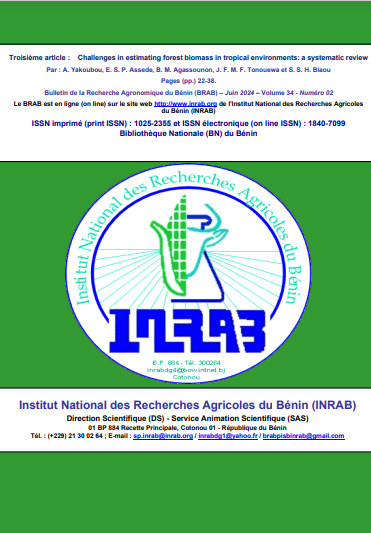Challenges in estimating forest biomass in tropical environments:
a systematic review
DOI:
https://doi.org/10.62344/brab.v34i02.193Keywords:
Allometric equation, forest ecosystems, estimation methods, functional traitsAbstract
"Forest biomass, as a carbon reservoir, is a key indicator of the impact of forests on climate change. The assessment of forest biomass largely depends on the 'functional traits' of plants, such as height, diameter, and wood density. Currently, the estimation of above-ground forest biomass (AGB) or carbon in tropical forest ecosystems has become a major concern. However, assessment procedures are not fully standardised and, more importantly, the uncertainty associated with estimates of this biomass is rarely assessed. Thus, the objective of the systematic review was to review the different methods and techniques for estimating above-ground forest biomass (AGB) based on allometric models. A bibliographic search of the SCOPUS and Dimensions databases was used to carry out the bibliometric analyses. The data were then extracted in CADIMA for the systematic review. The annual production of studies relating to biomass estimation using allometric equations based on functional traits has experienced an annual growth rate of around 10.78%. The types of functional traits most commonly used to develop allometric equations can be grouped into categories, namely traits related to growth, reproduction, survival and defense. Functional traits influenced AGB more significantly than environmental conditions. Despite the many studies carried out on different models, a considerable variation in estimated biomass values exists and is largely due to the absence of a standard biomass model and the collection of samples at various scales. In this context, a site-specific allometric model therefore proves to be a robust tool for sustainable forest management.

Published
Issue
Section
License
Les articles publiés par le Bulletin de la Recherche Agronomique du Bénin sont en libre accès. Ils sont gratuits pour tout le monde, immédiatement téléchargeables dès la publication et distribués sous la licence CC BY-NC-ND (https://creativecommons.org/licenses/by-nc-nd/4.0/).







